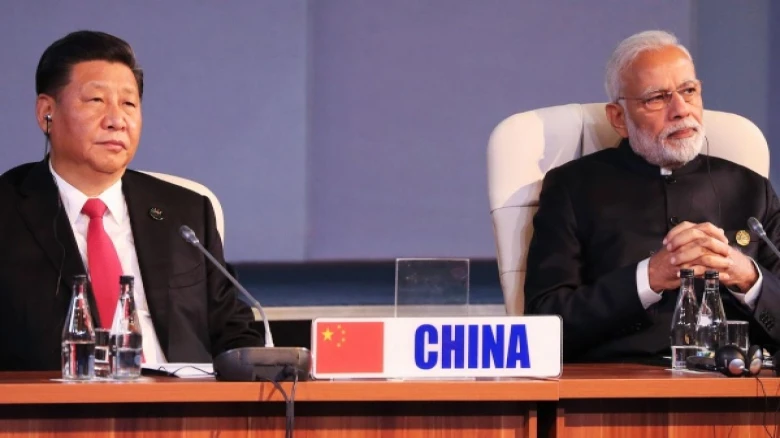Regional

The Chinese economy, led by President Xi Jinping, is being battered by a wobbling real estate sector that is endangering the banking sector, whereas the Indian economy is expected to rise by 7.5% this year.
Digital Desk: In the first quarter of the current fiscal year, India's gross domestic product (GDP) increased by a double-digit 13.5%, despite the fact that major world economies are struggling and the enormous Chinese economy is expected to slow down.
The Narendra Modi government's meticulously calculated fiscal and monetary responses to the epidemic that struck the nation in March 2020 deserve praise.
According to government officials and analysts, India's success may be attributed to the Modi administration's emphasis on protecting the poor through the PM Gareeb Kalyan Yojana, cheap loans for MSMEs, increased public support for capital expenditures, and encouraging private investments.
One of them added, "The capital spending of the Modi administration in the first quarter of FY23 is Rs. 1.75 lakh crore, which is similar to capital expenditure in the entire financial year of 2013-14 under the Congress-led United Progressive Alliance (UPA) regime.
According to him, India's Private Final Consumption Expenditure (PFCE) in the first quarter of the current fiscal year is 22 lakh crore, up 10% from pre-pandemic levels of 20 lakh crore. This shows that household consumption has continued to rise despite pandemic disruptions.
The Indian GDP currently stands at 36.85 lakh crore, exceeding both pre-COVID and pre-pandemic levels by 3.83%. India's economy is the fastest-growing in the world with the least amount of inflation when compared to other major nations, which is the result of the government's smart economic policies, he added.
The growth projection for the main economies in the Organization for Economic Co-operation and Development (OECD) quarterly GDP database is 0.4% for China, 1.7% for Germany, 1.7% for the United States, 4.2% for France, 4.6% for Italy, and 4.8% for Canada for the period of April to June 2022.
China's severe zero Covid lockdowns, along with significant issues in the banking and real estate sectors, are to blame for the country's economic slump.
With its diplomacy against Taiwan and the QUAD states, the Xi Jinping dictatorship has increased the economic damage, leaving recipient countries of Beijing's Belt Road Initiative (BRI) including Sri Lanka, Pakistan, Myanmar, and Kenya in financial ruin.
"Growth in India is in contrast to other big economies that are exhibiting symptoms of a slowdown," said Rumki Majumdar, an economist with Deloitte India. This ought to increase investor confidence globally and draw money into the economy.
India has had less of a trade-off between growth and inflation than other large peer countries because of its comparatively rapid growth and low inflation. In July 2022, India's retail inflation (CPI-C) decreased to a five-month low of 6.71 percent, according to a Union Finance Ministry official.
Officials and analysts are convinced that the economy is on a growth trajectory to attain 7–7.5% growth in 2022–2023 based on the Q1 GDP figures. According to the official, "strong performance of high-frequency indicators in July/August 2022 indicates continued growth in Q2 of 2022-23."
According to data, the manufacturing PMI [Purchase Managers' Index] reached an eight-month high of 56.4 in July 2022, helped by increases in output and new business orders.
A PMI services result of 55.5 in July 2022 indicates that service activity continued to grow well and remain in the expansionary zone. A PMI reading above 50 denotes an increase in economic activity in these sectors.
According to DK Srivastava, Chief Policy Advisor at consulting company EY India, all key segments are experiencing demand-side growth in the first quarter of FY23, which is more than their equivalent levels in the first quarter of FY20.
Private final consumption expenditure (PFCE) increased by 25.9% over the same quarter last year, while gross fixed capital formation (GFCF) increased by 20.1%, indicating a recovery in domestic demand, the economist added.
According to experts, India might end this fiscal year with growth of more than 7%. With enough policy support that assures continuing development momentum in the commerce, hotels, transportation, and other sectors, reinforced by increasing government capital spending on the demand side, we still believe that an annual increase of 7% or more in FY23 is feasible.
Given the rapid rise of central tax collections, which rose by about 25% in the first four months of FY23, this ought to be possible, he added.
India Inc. has faith in the strength of the Indian economy. Chandrajit Banerjee, director general of the CII, stated: "Industry is hopeful despite the current state of global unpredictability since domestic development prospects are likely to remain high on the strength of the government's facilitative measures."
The Indian economy "continues to roar post-pandemic thanks to deft and fiscally prudent management by Hon'ble Nirmala Sitaraman and her colleagues," according to ASSOCHAM President Sumant Sinha.
Sumant Sinha continued saying, "We must build on this growth surge by continuing reforms, including in the power, financial services, and manufacturing sectors, to ensure that we seize this historic opportunity to advance our journey towards developed nation status."
Leave A Comment